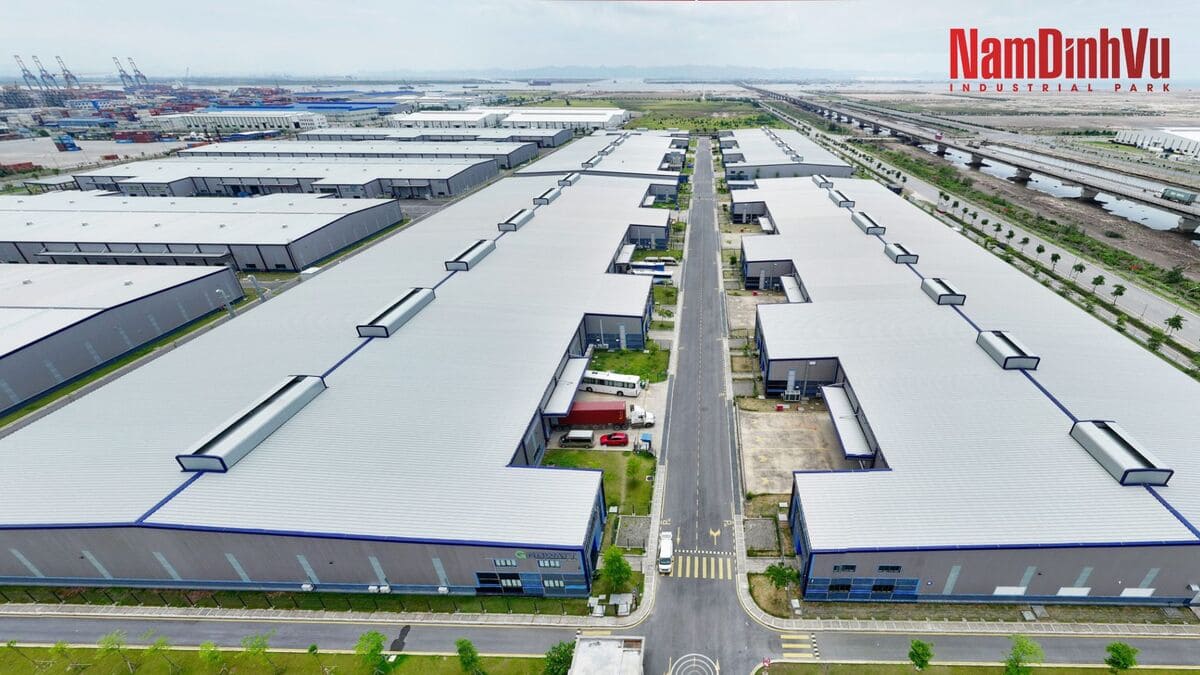Vietnam Factory Rental Price
Vietnam is an attractive choice for international manufacturers thanks to its low labor costs, strategic location, and fast-growing economy. However, to make informed investment decisions, it’s essential to understand all factory rental costs—both obvious and hidden. This guide breaks down the key cost factors to help investors plan effectively and avoid surprises.
Key Factors That Directly Impact Rental Prices (1)
Several key factors directly influence factory rental prices in Vietnam. From location and facility size to infrastructure, lease terms, and government incentives—each element plays a crucial role in shaping total costs and investment value.
- Location Matters: Rental prices vary significantly based on location. Industrial zones near major cities like Ho Chi Minh City or Hanoi typically command higher rents due to their well-developed infrastructure, proximity to ports, and access to skilled labor. In contrast, newer or more remote industrial areas may offer lower rates, though they may lack essential amenities. Investors must weigh the trade-off between cost savings and accessibility to logistics networks.
- Factory Size and Configuration: The size and layout of a factory directly influence rental fees. Larger facilities tend to have a lower cost per square meter, though they incur a higher total cost. Smaller spaces are more affordable and suited for small and medium-sized enterprises. Businesses also need to decide between ready-built factories, which reduce setup time, or custom-built ones that meet specific operational needs but come with higher initial investment.
- Infrastructure and On-site Facilities: The availability and quality of utilities—electricity, water, broadband, waste treatment, and roads—have a direct effect on rental prices. Some factories come equipped with added amenities like staff housing, parking lots, and canteens, which add value but also increase the rental rate. Inadequate infrastructure may seem cheaper initially but can lead to higher long-term operational costs.
- Lease Terms and Conditions: Long-term leases often come with discounts and financial predictability, while short-term leases offer greater flexibility. Investors must carefully review contractual terms, such as service charges, deposits, inflation-related rent adjustments, and prepayment conditions, to avoid unexpected expenses. Legal review of the lease agreement and consultation with local experts is highly recommended.
- Government Incentives: Vietnam’s industrial parks, particularly those in Special Economic Zones (SEZs), often provide incentives such as tax holidays or subsidized rental rates. Some zones offer reduced corporate taxes or special import/export treatment for high-tech or strategic industries. Understanding and leveraging these incentives can significantly lower operating costs.
Comparing Rental Types and Costs (1)
When choosing a factory for rent in Vietnam, businesses typically decide between ready-built and build-to-suit options. Each comes with distinct cost structures and benefits depending on operational scale and customization needs.
- Ready-Built Factories: These are categorized by tier (basic, medium, and high-end) to suit different business needs. Basic factories are minimally equipped and suitable for startups. Mid-tier and premium options include upgraded facilities like HVAC systems, loading docks, and cleanrooms, ideal for electronics or pharmaceutical production.
- Build-to-Suit Factories: Custom-built factories are tailored to unique manufacturing needs, offering optimized layouts and equipment placements. While offering long-term value, they come with higher upfront design, permitting, and construction costs. They’re best suited for enterprises requiring high customization and a long-term operational plan.
Hidden Costs Investors Must Plan For (1)
Beyond base rental rates, investors should account for hidden expenses that can significantly affect total costs. From utilities to legal fees and logistics, understanding these factors is key to building a realistic and sustainable budget.
- Maintenance and Utilities: Ongoing expenses like electricity, water, waste removal, and maintenance are often overlooked in budgeting. Older buildings may suffer from frequent equipment breakdowns, driving up unplanned costs. Prospective tenants should inspect the facility and clearly establish who bears maintenance responsibilities.
- Legal and Administrative Costs: Foreign investors may face fees related to registration, licenses, translation, and legal consultation. A lack of familiarity with local laws can lead to compliance issues or delays. Engaging local advisors can help ensure smooth onboarding and regulatory alignment.
- Logistics and Transportation: Remote locations may incur higher shipping costs and longer lead times. Businesses dependent on imports or exports must factor transportation efficiency into their decision. Choosing strategically located factories helps minimize logistics expenses and ensures smoother supply chain operations.
Vietnam’s Ready-Built Factory Market: Latest Rental Price Trends (2)
From late 2024 to early 2025, Vietnam’s ready-built factory (RBF) market has continued to draw strong interest from foreign investors. In the North, average rental prices have reached about USD 4.9 per square meter per month, up 2% year-on-year. Occupancy remains high at around 88%, especially in industrial zones near Hanoi, Hai Phong, and Bac Ninh—key areas with strong logistics and labor advantages.

In the South, where infrastructure is more developed, RBF rental prices are slightly higher at approximately USD 5.0 per square meter per month, also marking a 2% annual increase. Occupancy is similarly strong at 89%, driven by demand from FDI firms in sectors like electronics, logistics, and food processing.
Overall, RBF rental rates in Vietnam are rising steadily at about 2% annually. With occupancy rates nearing full capacity in many prime locations, demand is clearly outpacing supply, reinforcing the RBF market’s appeal for medium- to long-term manufacturing investments.
In conclusion, choosing the right factory for rent in Vietnam involves much more than selecting the lowest price. To ensure long-term success, investors should evaluate location, factory type, infrastructure quality, lease terms, and hidden costs. Collaborating with local consultants and conducting thorough due diligence will enable foreign businesses to secure a facility that meets operational needs at a sustainable cost.
Source:
(1). Core5
(2). OSSIF
